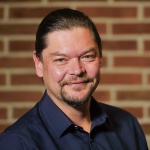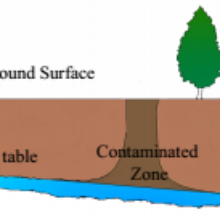Over the past few decades, soil and subsequently ground water contamination have raised growing concern as factors threatening the life of humans and other organisms as well as agricultural production sustainability. These concerns are, on the one hand, due to the increasing contaminated sites and their spreading throughout the world, and, on the other hand, due to the complicated environmental conditions governing these sites. According to reports, in Europe alone, there are more than 3,000,000 polluted sites, eight percent of which are classified as “highly polluted” and in urgent need of being cleaned up (EPA)
The purpose of this project is to simulate the remediation process in contaminated site in frame work of theory of porous media. In this frame work we can simulate all remediation techniques. The theory of porous media provides a comprehensive and excellent framework for modeling multiphasic porous body consisting of immiscible solid skeleton saturated by fluids and missible concentrations in solid and fluid.
Acknowledgement
“This work was completed as part of the REMEDIATE (Improved decision-making in contaminated land site investigation and risk assessment) Marie-Curie Innovation Training Network. The network has received funding from the European Union’s Horizon 2020 Programme for research, technological development and demonstration under grant agreement n. 643087. REMEDIATE is coordinated by the QUESTOR Centre at Queen’s University Belfast http://questor.qub.ac.uk/REMEDIATE/ “
Project Partners
IWW Water Centre
SUPREN
About remediate Project
The REMEDIATE Project is made up of 10 beneficiaries from five EU member states - the UK, Ireland, Germany, Denmark and Italy, and 13 associate partner organisations. All participants are committed to providing innovative research and training for more cost effective and sustainable remediation of contaminated land. The network is a multidisciplinary collaboration between internationally renowned research teams from academia and industry, each with complementary expertise in a wide range of site investigation and risk assessment technologies.

Tim Ricken
Univ.-Prof. Dr.-Ing.Head of Department

Seyed Morteza Seyedpour
Dr.-Ing.Head of Laboratories, Head of Experimental Mechanics & Enviromental Engineering Group, Researcher






